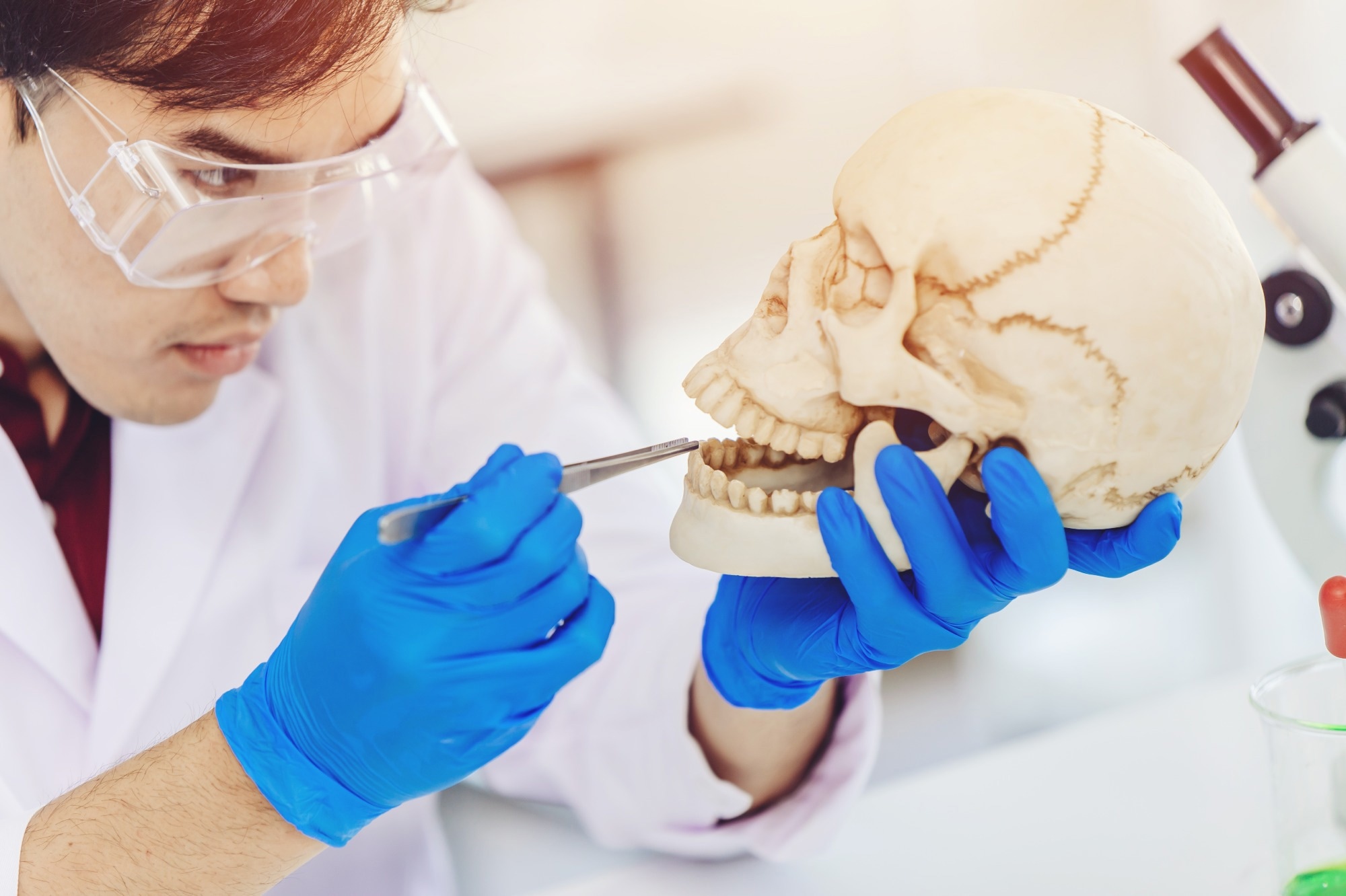A recent PLOS ONE study reports the prevalence of dental pathologies and anatomical variations in a Swedish Viking Age population using radiographic techniques.
 Study: Caries prevalence and other dental pathological conditions in Vikings from Varnhem, Sweden. Image Credit: Quality Stock Arts / Shutterstock.com
Study: Caries prevalence and other dental pathological conditions in Vikings from Varnhem, Sweden. Image Credit: Quality Stock Arts / Shutterstock.com
Background
Osteoarchaeological dental examinations provide unique information about general health, oral discomfort, infections of the jaws, dental wear, nutritional composition, and frequency of the samples. Therefore, these findings provide a greater understanding of the everyday life of an ancient population.
Several studies have documented the prevalence of dental caries from prehistoric times to the 19th century. This dental condition surged during the early and mid-20th century due to the availability of white sugar and processed foods.
Previous studies on Icelandic Vikings revealed a high degree of tooth wear with a few carious lesions. Another osteoarcheological study of Danish Viking remains indicated the prevalence of dental caries in around 30% of the study population, along with a significant number of jaw infections.
To date, few studies have documented the dental health of Swedish Vikings. The dental remains of the Viking Age population excavated around the Varnhem stone church were well preserved, which could provide greater insights into the everyday life of these people.
About the study
The current study involved an osteoarcheological analysis of the Viking population from the Swedish Varnhem settlement to better understand their oral conditions.
A total of 300 individuals were previously assessed by Västergötlands Museum’s archaeologists. Among these, 171 individuals with partial and complete dentitions were selected for further experiments in this study. The age and sex of the individuals were already determined.
Key selection criteria included the presence of complete or fragmented mandibulae, maxillae, or both. Based on the presence of permanent or deciduous/mixed dentition, the study cohort was divided into two groups.
A total of 133 individuals, 46 female, were present in the permanent dentition group, while 38 individuals were placed in the deciduous/mixed dentition group. The mean age of death of individuals in the permanent dentition group was 35 years and ranged between 14 and 50 years of age. However, the age of deaths ranged between less than one year and 12 years for the deciduous/mixed dentition group.
Clinical examinations of all dental samples were conducted under a strong light source using a dental probe. A dentist and undergraduate dental students examined teeth and jaws.
The clinical findings were validated using radiographic examination. To this end, a total of 18 individuals were randomly selected for radiographic analysis using the bitewing technique.
Study findings
A total of 3,293 teeth were examined in the permanent dentition group. About 50% of the study population exhibited at least one carious lesion; however, all juvenile individuals were caries-free.
The prevalence of caries was found to have a similar pattern to that of other European populations from the same time period from previous studies. The dental root surface was the most susceptible region to dental caries because of the higher retention of the bacterial biofilm.
The two common factors that cause gum recession are periodontal disease and abrasive brushing. In the case of the Viking population, a higher prevalence of root caries was linked to periodontal disease. The higher root caries occurrence in this population was attributed to poor oral hygiene.
Other than occasional toothpicking, no other oral hygiene measures were practiced during this time. As a result, bacterial biofilm remained on the root surface for a prolonged period.
Although most individuals in the study population were caries-free or developed one or a couple of lesions, a smaller section exhibited significant numbers of carious lesions.
Most large cavitated lesions were easily detected through clinical examinations. However, several lost teeth and a few initial carious lesions were identified through X-rays.
Dental infections were found in 4% of the teeth. A heavy abrasion to a maxillary incisor with an apical infection was observed in radiography. Some Vikings filed their teeth; however, the reason for this practice remains unknown.
The disproportionate gender in the excavation site could be attributed to the early Christian customs where men were buried in the south side of the churches and women in the north.
A positive correlation between age and tooth loss/caries prevalence was consistent with previous studies. The presence of fluoride in drinking water might have influenced the prevalence of caries.
Conclusions
The current study presents an extraordinary glimpse into the early life of the Swedish Viking settlement. The prevalence of tooth pain and tooth loss due to the development of dental caries was noted, in addition to some Vikings' habitual use of toothpicks and tooth filing.
Journal reference:
- Bertilsson, C., Vretemark, M., Lund, H., & Lingstrom, P. (2023) Caries prevalence and other dental pathological conditions in Vikings from Varnhem, Sweden. PLOS ONE 18(12). doi:10.1371/journal.pone.0295282